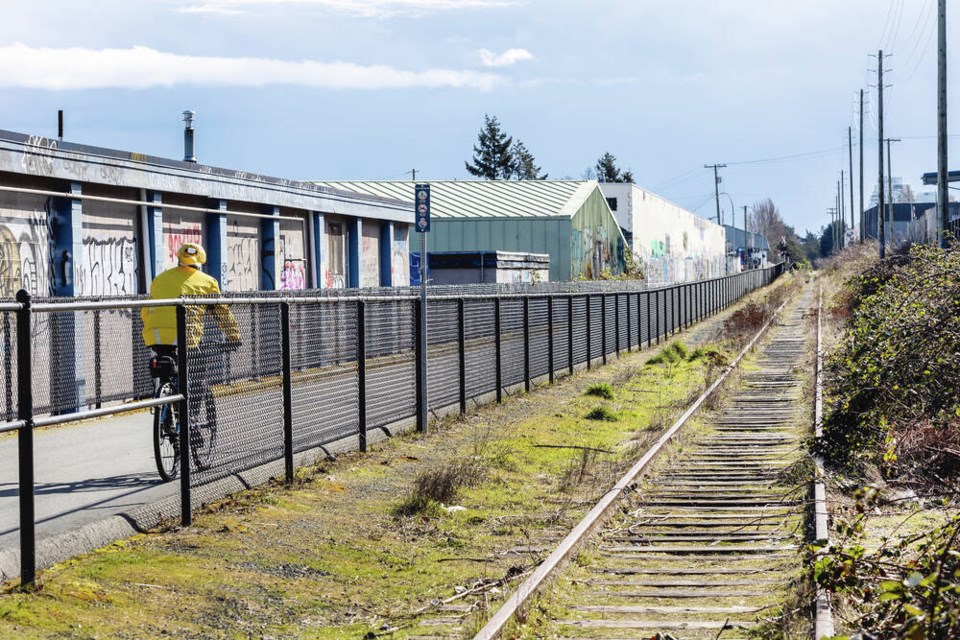Converting the old E&N rail line to an active transportation trail would cost an estimated $172.7 million and could generate $50 million in direct economic impact annually, says a new report for the Friends of Rails to Trails Vancouver Island.
Tourism would play a major role in the business benefits as support ventures open up, said Alastair Craighead, president of the non-profit Friends of Rails to Trails Vancouver Island, which commissioned the report.
The feasibility study by MJL Engineering Ltd., paid for by the federal government, outlines how a four-metre-wide, 289-kilometre trail between Victoria and Courtenay, with links within Nanaimo and west to Port Alberni, could work.
It examined successful trails in Canada and the U.S., predicting that an Island trail would attract close to a million visits annually.
“The study was a necessary step in validating the corridor trail with a feasible project which should be given serious consideration,” Craighead said.
It likely would not happen all at once but in pieces and would probably be completed over several years, he said.
The study says $101 million of the total project cost would go toward basic civil work on the trail. Other costs would include $13 million for railings and decking on 50 bridges, $12 million for at-grade crossing improvements, $10 million to raise vertical clearances on two bridges and $20 million for contingency costs.
Work that still needs to be done includes consultation with First Nations and communities, preparing a detailed case study, and coming up with a trail design that would accommodate users such as young children, people with disabilities, seniors and youth.
The rail corridor has been idle since passenger service was scrapped in 2011 because of the poor condition of the tracks.
Islanders have been debating the viability of resuming passenger and freight service using a modern train system and a Langford-Victoria commuter service.
In March, the provincial and federal governments announced that land used for the line would be returned to the Snaw-Naw-As Nation, which had launched a court case seeking return of its land since it was no longer being used for rail service. The province also committed $18 million to consultation.
The March decision was a blow to rail proponents who had been hoping for funding for a restored rail service.
Cost estimates for the trail did not include removing tracks, but Craighead said if the trail plan goes ahead, that responsibility would likely fall to the owner, the Island Corridor Foundation, which is made up of regional districts and First Nations.
The foundation was unable to reach a quorum at its annual general meeting in May after several First Nation members quit the board, unhappy with its goal of restoring rail service. The meeting was postponed.
Craighead said trail proponents are approaching First Nations for their comments and sharing the study with them.
He said the trail would not have to run through First Nation lands but could go around them.
Island Corridor Foundation co-chair Daniel Arbour said the organization plans to spend the summer “resetting our priorities” while working with the province and its members. The goal is to “try to sort out a range of things that need to be looked at for the future of the corridor.”
The corridor continues to represent a great opportunity to keep communities connected and to support reconciliation with First Nations, Arbour said.
MJL’s study is expected to be posted on the Friends of Rails to Trails Vancouver Island website (fortvi.ca) in a few weeks.
>>> To comment on this article, write a letter to the editor: [email protected]



